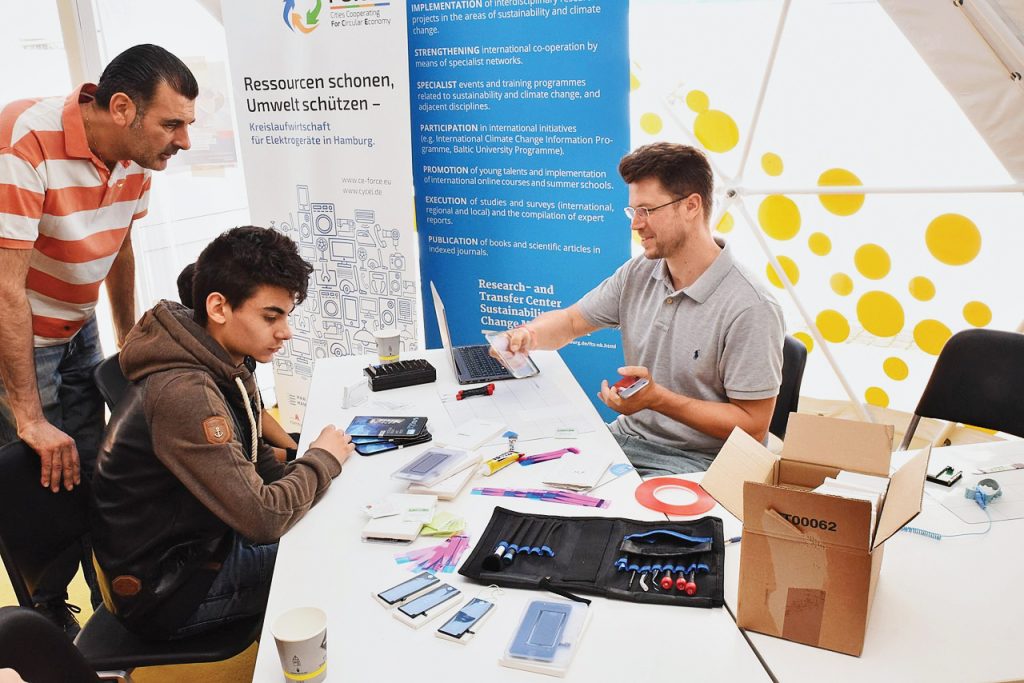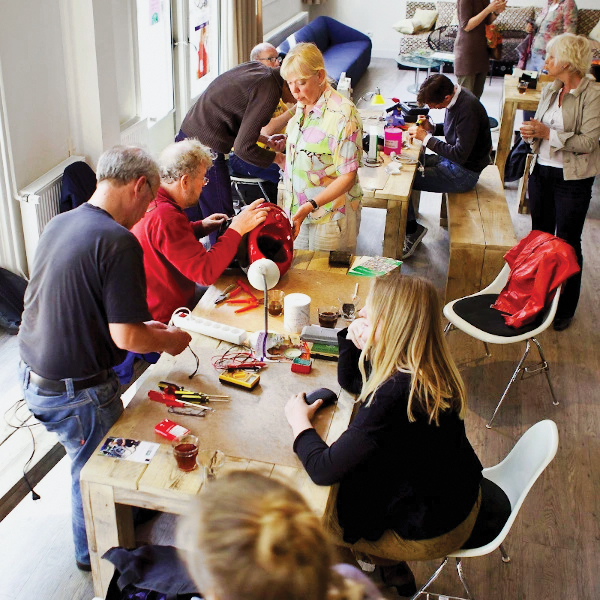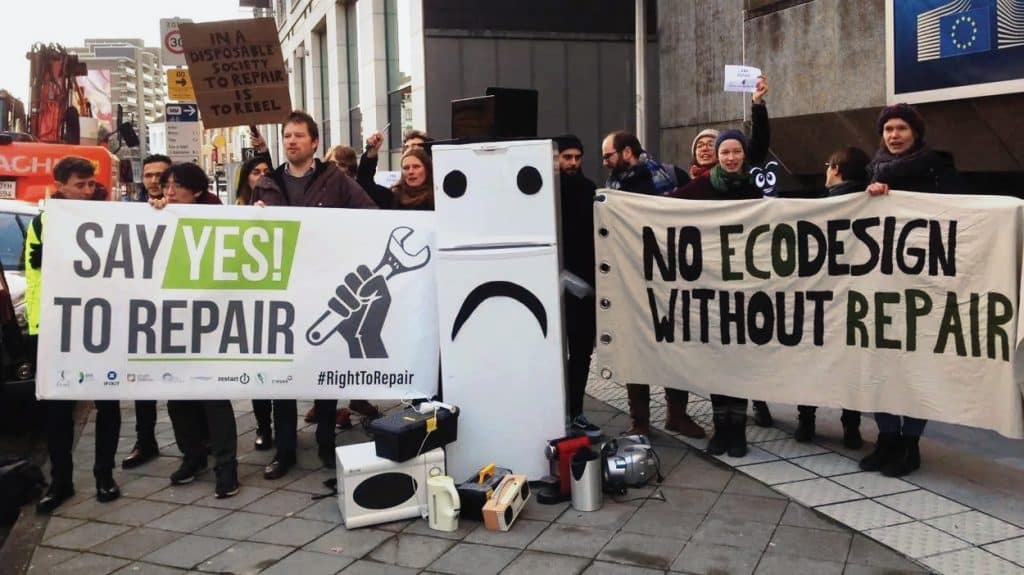With India joining the global ‘Right To Repair’ movement, Ashish Bhatia is optimistic about the equilibrium being restored in automotive.
 A global movement, ‘Right-To-Repair’ is customer-centric and aims to be an equaliser. The movement advocates for the right of individuals and small businesses to repair and modify their own electronic devices, appliances, and other products. If adhered to, in the automotive space, the aftermarket, it would have a domino effect on the Original Equipment Manufacturer (OEM) business including on the services business. In the aftermarket as a whole, wherein OEMs and suppliers prescribe genuine parts and accessories from the parent brand, today, the growing electronic content per vehicle has rendered the unorganised aftermarket helpless to an extent. With no choice but to redirect to the authorised workshops deemed equipped to do a better job. The movement, aims to increase access to repair manuals, parts, and diagnostic tools, as well as to promote repair-friendly design practices in manufacturing. It aligns well with the Do-It-Yourself (DIY) approach that is trending on social media.
A global movement, ‘Right-To-Repair’ is customer-centric and aims to be an equaliser. The movement advocates for the right of individuals and small businesses to repair and modify their own electronic devices, appliances, and other products. If adhered to, in the automotive space, the aftermarket, it would have a domino effect on the Original Equipment Manufacturer (OEM) business including on the services business. In the aftermarket as a whole, wherein OEMs and suppliers prescribe genuine parts and accessories from the parent brand, today, the growing electronic content per vehicle has rendered the unorganised aftermarket helpless to an extent. With no choice but to redirect to the authorised workshops deemed equipped to do a better job. The movement, aims to increase access to repair manuals, parts, and diagnostic tools, as well as to promote repair-friendly design practices in manufacturing. It aligns well with the Do-It-Yourself (DIY) approach that is trending on social media.
The amplification of the movement in recent years and the last quarter in particular, is being attributed to the end consumer’s run-in with complex repair procedures and exponentially high costs of repairs. Spare parts and labour costs for instance at an authorised two-wheeler service centre in Mumbai, representing a leading scooter brand have escalated to the tune of 30 per cent as a modest estimate in the post-pandemic era. The Annual Maintenance Contracts (AMC) availed by consumers are capped at offering 10 per cent discount on labour charges extended to far and few exceptions. Replacement of parts and any consumable are billed additionally beyond the AMC purview. For instance, replacement of an exhaust could cost you an estimated Rs.8,000 while a repair could be a mere Rs.400 from a local welder, through the workshop. Running or not running, one has to visit the workshops to receive service in exchange of a timebound AMC contract typically for four services a year. The practice of repair has given way to replacement in the use and throw, day and age we live in. So much for a circular economy that is preached at every touch point in the customer life cycle!
Add to it the practice of using proprietary software and hardware over open source has made repairs difficult or near impossible sans the use of sophisticated tools and the prerequisite knowledge. For instance, even a 2011 hatchback in 2023 requires the mechanic to troubleshoot using a connected laptop in order to check the state of health.
Manufacturers are being blamed for encouraging a culture of “planned obsolescence” as per the Ministry of Consumer Affairs, Food and Public Distribution. It states that the system is such whereby the design of any gadget is meant to last for a particular time only and after that particular period, it has to be replaced. When contracts fail to cede full control to the buyer-the legal right of owners are damaged, it states explicitly.
Growing acceptance
The movement is known to be supported by a diverse set of stakeholders. Groups, professionals, environmentalists, and even consumer advocates are known to have extended their support. Some say the right to repair is important for promoting sustainability by reducing waste and extending the life of products, others say it promotes economic justice by supporting local repair businesses and empowering consumers to make their repairs. With several countries passing or considering right-to-repair legislation, including the European Union, Canada, and several US states, India the world’s largest population extending its support is bound to add to the might of all supporting it.
The Automotive Component Manufacturers Association (ACMA) of India in March 2023 was among the latest to join global association leaders. Representing over 830 component manufacturers in India, it has extended its support to the critical, global movement. It signed the new right-to-repair position statement that lists the core beliefs of the movement and the objectives and intended outcomes of the right-to-repair legislation. The document set forth 10 best practice principles for developing a framework for the legislation that any supporting country can use and adapt to their needs. Vinnie Mehta, Director General, ACMA states, “ACMA has joined this global movement to express solidarity with other international like-minded associations across automotive nations for unshackling the aftermarket.”
Further, it is very heartening that the Ministry of Consumer Affairs, Food & Public Distribution, Government of India has already taken the initiative of creating a framework for the Right to Repair, he mentions. Legislation such as this will unleash the aftermarket in India and help it evolve into an organised sector, it is believed. It is noteworthy that while globally, the size of the aftermarket is as large as the OEM supply, in India, it is just 18 per cent of the overall USD 56.5 billion.
Acknowledging the significance of the global right-to-repair movement and the need for customers to maintain and repair the used product, Anuj Kathuria, President (India), JK Tyre and Industries Ltd. explained how the tyre manufacturer has prioritised the needs of its customers while developing new products, providing them with valuable options. “Over the years, we have offered products with cutting-edge technology that is favourable for customers in the aftermarket.” The company has 50 Re-tread centres in the country with state-of-the-art technology, machinery and trained manpower aimed at helping identify and recommending relevant repair and re-tread procedures to the fleet owners. This in turn brings down and reduces the operational costs. These centres help in avoiding scrap, ensuring a second and third life for tyres, he said.
Global aftermarket
Globally, the automotive aftermarket keeps 1.5 billion vehicles on the road while contributing USD 1.8 trillion to the global economy. After vehicles exit their warranty period, independent repair shops perform 70 per cent of repairs. A testimony to the aftermarket reach is how vehicle owners are deterred from plying their vehicle without undertaking repairs. This practice is prevalent in markets like New Zealand for example, confirmed Gopal P. Bhatia, an Indian-origin citizen of the island country from Vadodara. On probing further, it became clear that the consumer protection guidelines also stipulate a free and independent dispute resolution process to resolve problems or extra warranties if the work is not done properly by a mechanic deemed well established. The mechanic is deemed established only if he is registered with a trade association like the Motor Trade Association (MTA) or Vehicle Services Foundation (VSF). It is also true that a garage you may opt for might only be good for fixing cars of New Zealand and Japanese models over fixing European cars. This needs to be determined by consumers beforehand by exercising due diligence. With the right garage, part sourcing is claimed to be easier as well as the garage is more likely to have the right tools for carrying out the repairs. Likewise, there are dedicated garages for EV repairs in the island country.
In comparison to India, a Warrant of Fitness (WoF) is required for cars registered before 2000. It is issued every six months. The frequency is one year in the case of vehicles registered post-2000 anywhere in the world, for the lifetime. New cars need a WoF only three years after they are first registered post which they require a manual inspection. As per Waka Kotahi, the NZ Transport Agency, WoF is crucial to vehicles meeting required safety standards.
 The implementation has stringent laws for aggregates too. For example, even though the vehicle aggregates may clear a WoF inspection, if the tyres wear out to the extent of reaching their minimum depth, the foreseeable risk of a crash is heightened with the probability of a fine being levied. If the driver waits to replace the tyres until the next WoF check that could be scheduled at any of the 3200 WoF agents in New Zealand, it could have negative implications. An unfit vehicle is deemed “illegal” to drive, Bhatia emphasised. A fit vehicle bears a WoF badge inside, on the front windscreen on the driver’s side.
The implementation has stringent laws for aggregates too. For example, even though the vehicle aggregates may clear a WoF inspection, if the tyres wear out to the extent of reaching their minimum depth, the foreseeable risk of a crash is heightened with the probability of a fine being levied. If the driver waits to replace the tyres until the next WoF check that could be scheduled at any of the 3200 WoF agents in New Zealand, it could have negative implications. An unfit vehicle is deemed “illegal” to drive, Bhatia emphasised. A fit vehicle bears a WoF badge inside, on the front windscreen on the driver’s side.
 In the EU, the ‘right to repair’ proposal was announced in the New Consumer Agenda and the circular economy action plan. It is said to tackle obstacles that discourage consumers to repair due to inconvenience, lack of transparency or difficult access to repair services. The move to make repairs more lucrative except when repairs are costlier than replacement is deemed to encourage repair as a more sustainable consumption choice, which in turn contributes to the climate and environmental objectives under the European Green Deal. With OEMs allegedly blocking access to wireless transmission of vehicle repair and maintenance data, the movement is believed to complement several other proposals presented by the Commission to achieve sustainable consumption throughout the entire life cycle of a product.
In the EU, the ‘right to repair’ proposal was announced in the New Consumer Agenda and the circular economy action plan. It is said to tackle obstacles that discourage consumers to repair due to inconvenience, lack of transparency or difficult access to repair services. The move to make repairs more lucrative except when repairs are costlier than replacement is deemed to encourage repair as a more sustainable consumption choice, which in turn contributes to the climate and environmental objectives under the European Green Deal. With OEMs allegedly blocking access to wireless transmission of vehicle repair and maintenance data, the movement is believed to complement several other proposals presented by the Commission to achieve sustainable consumption throughout the entire life cycle of a product.
The bone of contention for OEMs in turn is that it could lead to safety risks and intellectual property violations. This introduction in the EU is thus setting the framework for a true ‘right to repair’ across the EU as per the European Commission. The proposal is also part of the European Commission’s broader goal of becoming the first climate-neutral continent by 2050 which it believes “can only happen if consumers and businesses are consuming and producing more sustain ably.” Further, the EU passed legislation that required manufacturers to supply parts of products to professional repairmen for a decade. These initiatives are estimated to bring EUR 4.8 bn in growth and investment in the EU.
In the USA, the Federal Trade Commission is known to have directed manufacturers to remedy any unfair, anti-competitive practices. The manufacturers have been asked to ensure that consumers have the flexibility to carry out repairs themselves or by a third-party agency. Bills have been introduced in 28 states. The UK has also passed a law on the lines. In Australia, there are repair cafes that have it edge past other countries with a stand out phenomenon as an Australian system. The free meeting places have volunteer repairmen gather to put their repairing skills to good use. In India, the demand to align with International best practices augurs well for consumers and promises to restore equilibrium. Implementation will be the key.













Leave a Reply